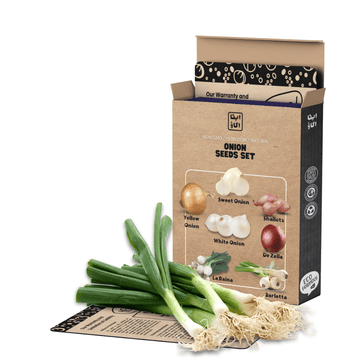Starting a rooftop garden is a fantastic way to utilize unused space, grow your own food, and contribute to environmental sustainability. In Pakistan, with its dense urban areas and growing interest in self-reliance, rooftop gardening can provide fresh produce and green spaces. Here’s a step-by-step guide to help you get started.
Step 1: Assess the Roof's Suitability
Procedure:
1. **Structural Integrity**: Ensure your roof can support the additional weight of soil, plants, and water. Consult a structural engineer if necessary.
2. **Sunlight**: Check the amount of sunlight your roof receives daily. Most vegetables and fruits need at least 6-8 hours of direct sunlight.
3. **Access and Safety**: Ensure safe and easy access to the roof and consider safety measures like railings or barriers.
Step 2: Plan Your Garden Layout
Procedure:
1. **Design**: Sketch a layout of your garden, considering the placement of containers, raised beds, and walking paths.
2. **Zones**: Create zones for different types of plants based on their sunlight and water needs.
Step 3: Choose Your Plants
Procedure:
1. **Climate-Suitable Plants**: Select plants that thrive in Pakistan’s climate, such as tomatoes, peppers, herbs, leafy greens, and root vegetables.
2. **Variety**: Choose a mix of vegetables, fruits, and herbs to diversify your garden.
Step 4: Gather Necessary Materials
Materials Needed:
- Containers or raised beds
- Quality soil and compost
- Seeds or seedlings
- Gardening tools (shovel, trowel, gloves)
- Watering system (watering can, hose, or drip irrigation)
Step 5: Prepare the Soil
Procedure:
1. **Soil Mix**: Use a lightweight, well-draining soil mix. Combine garden soil with compost and perlite or vermiculite for aeration.
2. **Filling Containers**: Fill your containers or raised beds with the prepared soil mix.
Step 6: Set Up a Watering System
Procedure:
1. **Manual Watering**: Use a watering can or hose for small gardens.
2. **Drip Irrigation**: Install a drip irrigation system for efficient and consistent watering, especially useful for larger gardens.
Step 7: Planting
Procedure:
1. **Sowing Seeds**: Plant seeds according to the depth and spacing instructions on the seed packets.
2. **Transplanting Seedlings**: Gently transplant seedlings into the soil, ensuring roots are well-covered and the plants are stable.
Step 8: Provide Support Structures
Procedure:
1. **Stakes and Cages**: Use stakes or tomato cages to support tall or vining plants.
2. **Trellises**: Install trellises for climbing plants like beans and cucumbers.
Step 9: Maintenance and Care
Procedure:
1. **Watering**: Maintain consistent watering, keeping the soil moist but not waterlogged.
2. **Feeding**: Fertilize with organic compost or balanced fertilizer every few weeks.
3. **Pruning**: Regularly prune plants to remove dead or diseased leaves and encourage healthy growth.
4. **Pest Control**: Monitor for pests and diseases, using organic treatments like neem oil or insecticidal soap.
Step 10: Harvesting and Enjoying
Procedure:
1. **Harvest Timing**: Harvest your produce when it reaches peak ripeness for the best flavor and nutritional value.
2. **Regular Picking**: Regularly pick ripe vegetables and fruits to encourage continuous production.
Additional Tips
- **Seasonal Planting**: Rotate crops according to the season to ensure a year-round supply of fresh produce.
- **Community Involvement**: Engage neighbors or local community groups in rooftop gardening to share knowledge and resources.
- **Educational Resources**: Utilize online gardening forums, local gardening clubs, and extension services for ongoing support and advice.
Conclusion
Starting a rooftop garden in Pakistan involves careful planning, suitable plant selection, and ongoing care. By following these steps, you can transform your rooftop into a productive green space, contributing to your self-reliance and the environment. Happy gardening!










